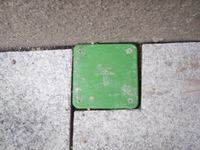Hello.
I know that the topic has been discussed many times on the forum, but I haven`t found a specific answer.
I have a problem with 2 cases:
1.
Today I went to see a newly built house and after seeing it, my hands dropped again.
There is NO grounding installed in it!! True, it wasn`t in the project, because I also watched it. Signatures, of course, of master engineers with construction licenses on each page of the project, and the project is the same crap as many [in terms of electrical installation]...
There is, however, a 5x6mm^2 connection for an installed power of 25kW and a PEN distribution in the meter box.
I asked the builders if they had welded a hoop iron to the reinforcement of the benches, and they looked at me like I was an idiot and replied with a smile on their faces: "Sir, why would anyone need that..."
2.
The second house, as a correction, because the electrician took the money and disappeared, there are only wires laid, boxes filled, wires in the boxes not connected, the switchboard not assembled. However, there is a 5x10mm^2 connection, a PEN distribution in the meter box and no grounding. Conductive parts [copper central heating installation and furnace] connected with a 4mm^2 cable introduced into the switchboard. It follows that my predecessor`s assumption was to attach the equipotential bonding to the PE bus in the switchboard, and the grounding in the meter box.
Both buildings do not have lightning protection or GSW installations.
How to solve the problem of lack of grounding and GSW in both buildings to solve the problem according to art and successfully pass acceptance measurements.
I started making customers aware that grounding would be necessary.
Which method will be more effective: driving steel rods into the ground, connecting them with a hoop and inserting them into the building, or digging a hoop as a horizontal or ring earth electrode? The house stands on a small hill.
Do you often encounter lack of grounding and GSW in new buildings, or PE grounding provided in the box?
Thank you in advance for your response.
Regards.
Miwhoo.
I know that the topic has been discussed many times on the forum, but I haven`t found a specific answer.
I have a problem with 2 cases:
1.
Today I went to see a newly built house and after seeing it, my hands dropped again.
There is NO grounding installed in it!! True, it wasn`t in the project, because I also watched it. Signatures, of course, of master engineers with construction licenses on each page of the project, and the project is the same crap as many [in terms of electrical installation]...
There is, however, a 5x6mm^2 connection for an installed power of 25kW and a PEN distribution in the meter box.
I asked the builders if they had welded a hoop iron to the reinforcement of the benches, and they looked at me like I was an idiot and replied with a smile on their faces: "Sir, why would anyone need that..."
2.
The second house, as a correction, because the electrician took the money and disappeared, there are only wires laid, boxes filled, wires in the boxes not connected, the switchboard not assembled. However, there is a 5x10mm^2 connection, a PEN distribution in the meter box and no grounding. Conductive parts [copper central heating installation and furnace] connected with a 4mm^2 cable introduced into the switchboard. It follows that my predecessor`s assumption was to attach the equipotential bonding to the PE bus in the switchboard, and the grounding in the meter box.
Both buildings do not have lightning protection or GSW installations.
How to solve the problem of lack of grounding and GSW in both buildings to solve the problem according to art and successfully pass acceptance measurements.
I started making customers aware that grounding would be necessary.
Which method will be more effective: driving steel rods into the ground, connecting them with a hoop and inserting them into the building, or digging a hoop as a horizontal or ring earth electrode? The house stands on a small hill.
Do you often encounter lack of grounding and GSW in new buildings, or PE grounding provided in the box?
Thank you in advance for your response.
Regards.
Miwhoo.



